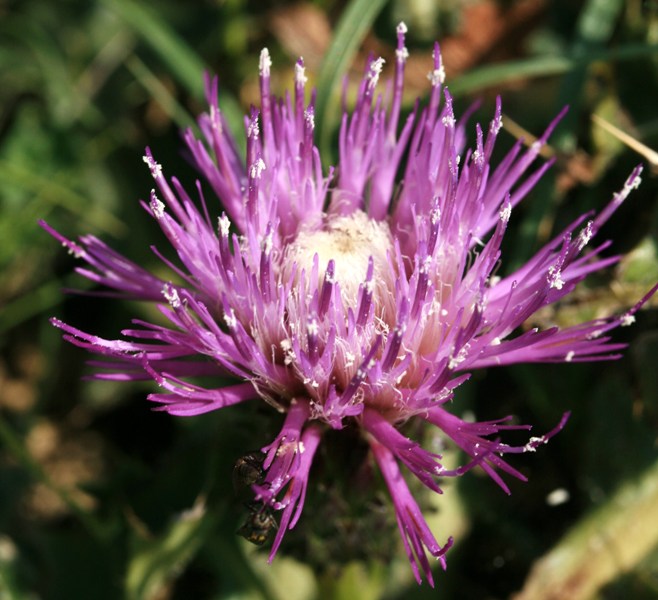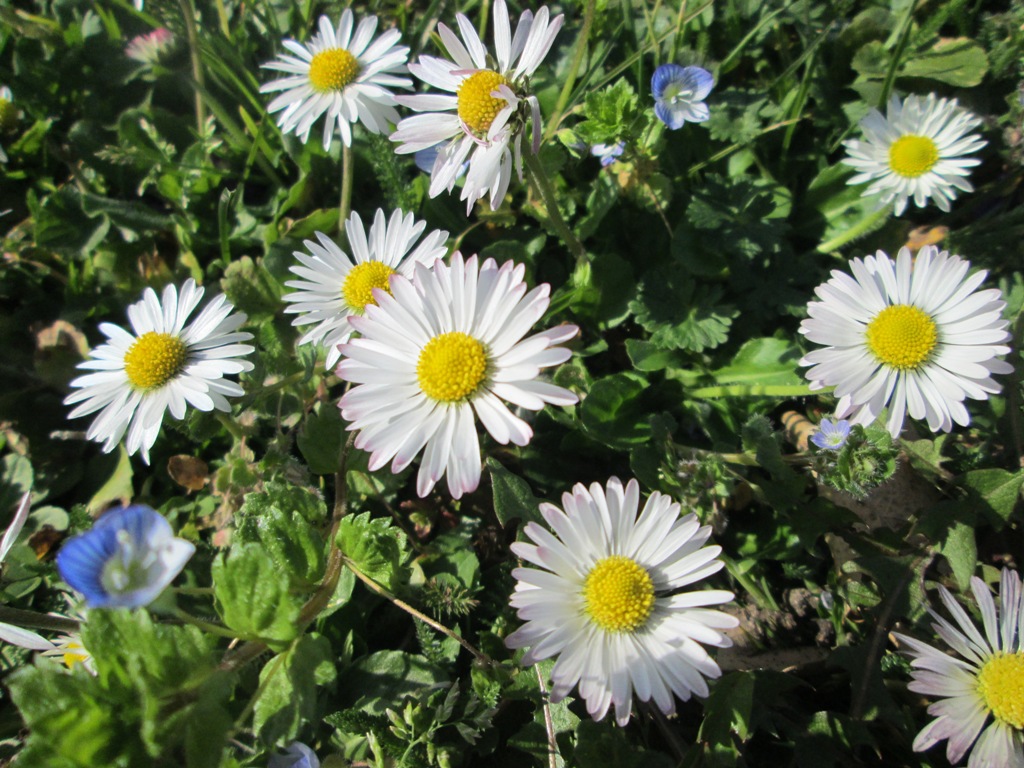
The main heading of my wonderful weed blog is of Greater Knapweed or Centaurea scabiosa! See further in today’s block to learn about all the virtues of this genus.
Today I will write the last part on our native Asteraceae or ‘composites’ and daisy family in common terms. All known medicinal uses and other uses are mentioned.
On the end of this post all the links to the posts I’ve done so far about this large family!
In the last post I covered with what we see as the common daisies: yellow centred disk flowered with a ray of white florets as well as a few other composites or Asteraceae.
This time we start with plants we don’t immediately associate with the composites, but closely observed we find always the common combination of many disc florets, surrounded or not with ray florets.
Then finishing off with the other typical group of the Asteraceae which are the various ‘dandelion like’ flower members!
Most medical information again from the Medicinal Flora by J. Barker. The links to the scientific and common name provide also with good, general information about the plants!
There is a green background for the text if the plant is edible, ornamental or otherwise useful for wildlife, etc. Pink background is either as a warning or medicinal use. Blue background for interesting facts! To make the post more colourful I have given the plant a background of the flower colour!
MOST MEDICINAL PLANTS ARE ALSO TOXIC IN LARGE DOSE. Advice is to never self-medicate.
Contents:
ARTEMISIAS OR WORMWOODS
- Artemisia vulgaris or Mugwort
- Artemisia absinthium or Wormwood
- A. abrotanum or Southernwood (Neophyte)
- A. annua or Annual Mugwort
- A. biennis or Slender Mugwort
Tussilago farfara or Coltsfoot
Petasitis albus or White Butterbur & P. hybridus or Butterbur
- P. japonicus or Giant Butterbur
- P. pyrenaicus or Winter Heliotrope
Jacobaea vulgaris ( syn. Senecio jacobaea) or Common Ragwort
- Jacobaea aquatica or Marsh Ragwort
- J. erucifolia or Hoary Ragwort
- J. maritima or Silver Ragwort (Neophyte)
- J. paludosa or Fen Ragwort and also 2 hybrids:
- J. × albescens (Jacobaea maritima × vulgaris)
- J. × ostenfeldii (Jacobaea vulgaris × aquatica)
Senecio vulgaris or Groundsel
- S. cambrensis or Welsh Groundsel
- S. doria or Golden Ragwort (Neophyte)
- S. doronicum or Chamois Ragwort (Neophyte)
- S. eboracensis or York Ragwort
- S. glastifolius or Woad-leaved Ragwort (Neophyte)
- S. inaequidens or Narrow-leaved Ragwort (Neophyte)
- S. minimus or Toothed Fireweed (Neophyte)
- S. ovatus or Wood Ragwort (Neophyte)
- S. sarracenicus or Broad-leaved Ragwort (Neophyte)
- S. smithii or Magellan Ragwort (Neophyte)
- S. squalidus or Oxford Ragwort (Neophyte)
- S. sylvaticus or Heath Groundsel
- S. vernalis or Eastern Groundsel (Neophyte)
- S. viscosus or Sticky Groundsel (Neophyte)
Calendula officinalis or Pot Marigold
Calendula arvensis or Field Marigold (Neophyte)
Carlina vulgaris or Carline Thistle
Arctium lappa or Greater Burdock & A. minus or Lesser Burdock
Arctium tomentosum or Woolly Burdock
Silybum marianum or Milk Thistle
Centaurea nigra or Lesser Knapweed, C. scabiosa or Greater Knapweed & C. cyanus or Cornflower
- Centaurea aspera or Rough Star-thistle (Neophyte)
- C. calcitrapa or Red Star-thistle (Archaeophyte)
- C. diluta or Lesser Star-thistle (Neophyte)
- C. jacea or Brown Knapweed (Neophyte)
- C. macrocephala or Giant Knapweed (Neophyte)
- C. montana or Perennial Cornflower (Neophyte)
- C. solstitialis or Yellow Star-thistle (Neophyte)

